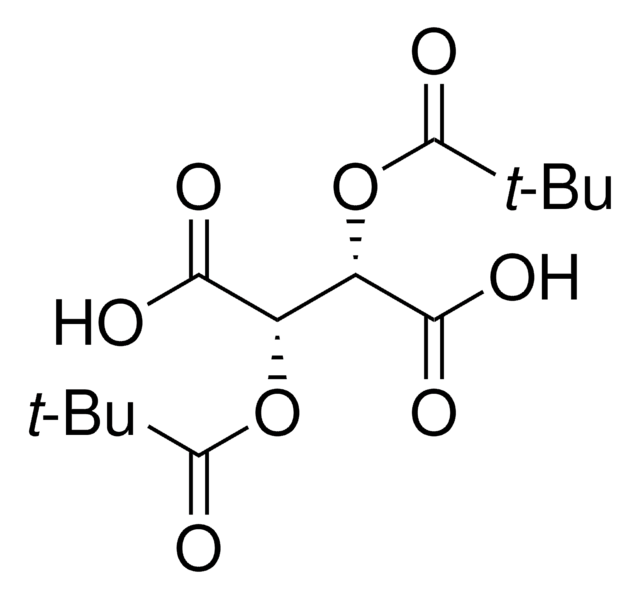67372
Melting point standard 283-286°C
analytical standard
Synonyme(s) :
Anthraquinone
About This Item
Produits recommandés
Qualité
analytical standard
Niveau de qualité
Densité de vapeur
7.16 (vs air)
Pression de vapeur
1 mmHg ( 190 °C)
Durée de conservation
limited shelf life, expiry date on the label
pb
379-381 °C (lit.)
Pf
283-286 °C (±0.3°C)
284-286 °C (lit.)
Application(s)
food and beverages
pharmaceutical
Format
neat
Chaîne SMILES
O=C1c2ccccc2C(=O)c3ccccc13
InChI
1S/C14H8O2/c15-13-9-5-1-2-6-10(9)14(16)12-8-4-3-7-11(12)13/h1-8H
Clé InChI
RZVHIXYEVGDQDX-UHFFFAOYSA-N
Vous recherchez des produits similaires ? Visite Guide de comparaison des produits
Description générale
The mp value is recorded as an average of 6 to 12 measurements with a Büchi B-545 equipment that is calibrated against primary standards. Melting point is determined by Capillary method, as described in Ph. Eur. 2.2.14.
Application
This product also features as a reference standard in thermal property investigations.
Caractéristiques et avantages
- Melting point calibration standard traceable to primary standards (LGC, London)
- Grade: Analytical Standard
- Melting point validated in the thermodynamic mode of analysis
- Standard deviation up to ± 0.3 °C
- Available with certificates of analysis and safety data sheet
Mention d'avertissement
Danger
Mentions de danger
Conseils de prudence
Classification des risques
Carc. 1B - Skin Sens. 1
Code de la classe de stockage
6.1C - Combustible acute toxic Cat.3 / toxic compounds or compounds which causing chronic effects
Classe de danger pour l'eau (WGK)
WGK 1
Point d'éclair (°F)
482.0 °F - closed cup
Point d'éclair (°C)
250 °C - closed cup
Équipement de protection individuelle
dust mask type N95 (US), Eyeshields, Faceshields, Gloves
Listes réglementaires
Les listes réglementaires sont principalement fournies pour les produits chimiques. Seules des informations limitées peuvent être fournies ici pour les produits non chimiques. L'absence d'indication signifie qu'aucun des composants n'est répertorié. Il incombe à l'utilisateur de s'assurer de l'utilisation sûre et légale du produit.
EU REACH Annex XVII (Restriction List)
Faites votre choix parmi les versions les plus récentes :
Certificats d'analyse (COA)
It looks like we've run into a problem, but you can still download Certificates of Analysis from our Documents section.
Si vous avez besoin d'assistance, veuillez contacter Service Clients
Déjà en possession de ce produit ?
Retrouvez la documentation relative aux produits que vous avez récemment achetés dans la Bibliothèque de documents.
Les clients ont également consulté
Notre équipe de scientifiques dispose d'une expérience dans tous les secteurs de la recherche, notamment en sciences de la vie, science des matériaux, synthèse chimique, chromatographie, analyse et dans de nombreux autres domaines..
Contacter notre Service technique











